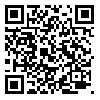Volume 60, Issue 1 (13 2002)
Tehran Univ Med J 2002, 60(1): 82-87 |
Back to browse issues page
Download citation:
BibTeX | RIS | EndNote | Medlars | ProCite | Reference Manager | RefWorks
Send citation to:



BibTeX | RIS | EndNote | Medlars | ProCite | Reference Manager | RefWorks
Send citation to:
Shahsavand E, Noroozian M, Faiiazi M. Neurological Soft Signs In Psychoses A Comparison Between Schizophrenia & Other Psychotic Disorders. Tehran Univ Med J 2002; 60 (1) :82-87
URL: http://tumj.tums.ac.ir/article-1-1286-en.html
URL: http://tumj.tums.ac.ir/article-1-1286-en.html
Abstract: (6886 Views)
Schizophrenia is one of the most important and disabling mental disorders in the world. Males and females are equally affected. Diagnosis is a very difficult problem in this disorder. Because the diagnostic systems such as ICD-10 and DSM-IV are mainly subjective, they are not valid and reliable. Essentially, in the future, we will need to more objective criteria in psychiatry especially in diagnosis of schizophrenia. Neurological soft signs are an example of these objective criteria. In this study we evaluated the prevalence of neurological soft signs in schizophrenic patients and compared it with the prevalence of these signs in other psychotic patients (except mood disorders with psychotic features) and normal subjects.
Methods: We compared the neurological soft signs (sensory motor integration, motor. Coordination, consequent complex motor acts, primary reflexes, and eye movements) in 30 schizophrenic patients, 30 other psychotic patients (other than mood disorders with psychotic features) and 30 normal subjects. Diagnosis of schizophrenia and also other psychoses were based on DSM-IN criteria. Normal subjects have been selected form the staff of Roozbeh hospital randomly.
Results: The difference between the means of motor coordination subscale of neurological soft signs in schizophrenia and other psychotic disorders (other than mood disorders with psychotic features) were significant (P value < 0.04). There were no significant differences between the means of other subscales of neurological soft signs in two groups of patients.
Conclusion: There are some disturbances of motor coordination subscale of neurological soft signs in patients with schizophrenia. It seems that, these disturbances are evidence of involvements of basal ganglia, motor cerebral cortex, and cerebellum. So it may be suggested that motor coordination as a marker can be used in differentiation between the schizophrenia and other psychotic disorders.
Methods: We compared the neurological soft signs (sensory motor integration, motor. Coordination, consequent complex motor acts, primary reflexes, and eye movements) in 30 schizophrenic patients, 30 other psychotic patients (other than mood disorders with psychotic features) and 30 normal subjects. Diagnosis of schizophrenia and also other psychoses were based on DSM-IN criteria. Normal subjects have been selected form the staff of Roozbeh hospital randomly.
Results: The difference between the means of motor coordination subscale of neurological soft signs in schizophrenia and other psychotic disorders (other than mood disorders with psychotic features) were significant (P value < 0.04). There were no significant differences between the means of other subscales of neurological soft signs in two groups of patients.
Conclusion: There are some disturbances of motor coordination subscale of neurological soft signs in patients with schizophrenia. It seems that, these disturbances are evidence of involvements of basal ganglia, motor cerebral cortex, and cerebellum. So it may be suggested that motor coordination as a marker can be used in differentiation between the schizophrenia and other psychotic disorders.
| Rights and permissions | |
 |
This work is licensed under a Creative Commons Attribution-NonCommercial 4.0 International License. |





